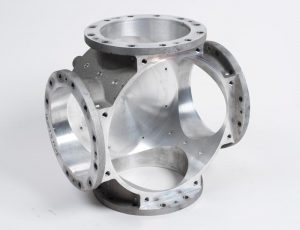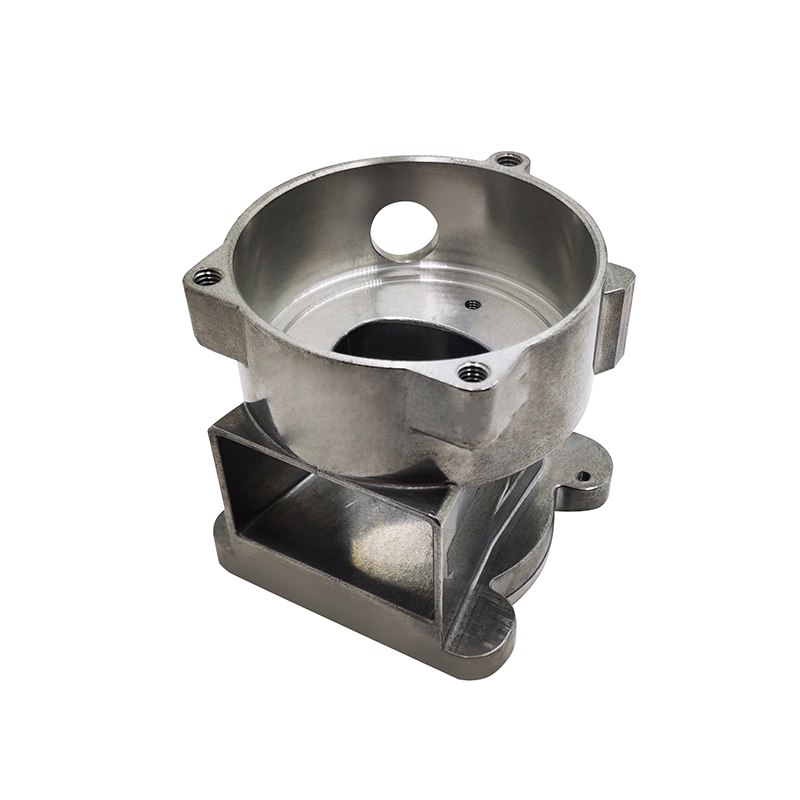Understanding Quality Control in aluminum casting
Aluminum Casting Explained: Key Facts and Insights for Market Professionals
Aluminum casting functions as an essential procedure in modern-day manufacturing, shaping parts across numerous sectors. Its varied techniques, such as sand and die casting, deal with different manufacturing needs. The unique homes of aluminum alloys boost their applicability, yet challenges stay in maintaining top quality and efficiency. Comprehending these elements is crucial for industry experts. What are the most up to date advancements and finest techniques that can even more optimize this procedure?
Overview of Aluminum Casting Processes

Crucial element of aluminum casting procedures include the preparation of molds, which may be made from sand, steel, or ceramic materials, relying on the meant use. Additionally, temperature control is essential to guarantee proper melting and solidification of aluminum.
The casting process enables complex layouts and can achieve high levels of dimensional accuracy. When cooled down, the castings might go through finishing operations such as machining or surface area treatment to satisfy particular efficiency standards. On the whole, aluminum casting works as a functional manufacturing method, successfully fulfilling the diverse needs of numerous sectors.
Kinds Of Aluminum Casting Approaches
In the domain name of aluminum casting, various approaches are used to attain different outcomes. Sand casting techniques give flexibility and cost-effectiveness for complex forms, while die casting processes offer high accuracy and effectiveness for automation. Understanding these methods is essential for choosing the suitable technique based upon task requirements.
Sand Casting Techniques
Sand casting strategies stand for an essential method in aluminum casting, where sand is utilized as a mold and mildew product to form liquified metal. This procedure entails producing a pattern from the preferred component, which is after that put in a sand blend to develop a mold and mildew. The sand is compacted around the pattern, and after removal, it develops a dental caries in the shape of the part. Molten aluminum is put into this dental caries, allowing it to cool and strengthen. One significant benefit of sand casting is its flexibility; it can accommodate large elements and complicated shapes. In addition, the materials made use of are reasonably low-cost, making it an obtainable option for various manufacturing applications in the aluminum market.
Die Casting Processes
Die casting procedures are a prominent approach for forming aluminum elements, making use of high-pressure techniques to force molten steel into precisely crafted mold and mildews. This process is specifically preferred for its capacity to create complicated forms with tight tolerances and a smooth coating. There are two main kinds of die casting: hot chamber and chilly chamber. Warm chamber die casting is appropriate for metals with reduced melting factors, enabling for faster manufacturing rates. Conversely, cool chamber die casting is suitable for higher melting point metals, calling for a separate melting heater. Both techniques boost performance and minimize material waste, making them necessary in auto, aerospace, and customer goods markets. Recognizing these procedures aids specialists select one of the most ideal technique for their specific applications.
Product Quality of Aluminum Alloys

Toughness and Resilience
Strength and longevity are critical features of aluminum alloys that make them ideal for various casting applications. These products display a positive strength-to-weight proportion, enabling for the creation of lightweight yet durable parts. With regard to tensile strength, particular aluminum alloys can be crafted to hold up against significant loads without flawing. This residential property is particularly essential in sectors such as aerospace and auto, where performance and security are extremely important. Furthermore, aluminum discover this alloys usually maintain their mechanical properties under diverse temperature conditions, guaranteeing regular performance. The innate ductility of these alloys additionally enables effective shaping throughout the casting process, making it simpler to generate complicated geometries. Overall, the toughness and toughness of aluminum alloys add significantly to their prevalent usage in innovative applications.
Corrosion Resistance Characteristics
While aluminum alloys are treasured for their strength and lightweight homes, their rust resistance is an additional vital feature that boosts their viability for numerous applications. Aluminum normally develops a protective oxide layer when exposed to dampness, which helps to stop further oxidation. This intrinsic residential or commercial property makes aluminum alloys especially useful in atmospheres vulnerable to rust, such as marine and commercial settings. Additionally, various alloy make-ups can affect resistance levels, with certain alloys especially crafted to improve this characteristic. Treatments like anodizing can better enhance rust resistance by thickening the oxide layer. Comprehending the deterioration resistance of aluminum alloys is vital for sector experts when choosing products for projects calling for durability and long life in difficult settings.
Advantages of Aluminum Casting in Production
Aluminum casting offers various advantages in production, making it a preferred selection for various markets. One considerable advantage is its light-weight nature, which contributes to lowered transport expenses and improved energy efficiency in end items. In addition, aluminum's superb thermal and electrical conductivity boosts capability in applications requiring warm dissipation or electrical conduction.
The product's capability to be cast into intricate forms enables style versatility, minimizing the need for added machining processes. Additionally, aluminum casting displays superior rust resistance, causing longer product life-spans and lower upkeep costs.

Typical Applications of Aluminum Castings
The flexibility of aluminum casting allows its extensive usage throughout different markets. Usual applications include automobile parts, where lightweight and corrosion-resistant components, such as engine blocks and transmission real estates, boost lorry efficiency. In the aerospace market, aluminum spreadings are utilized for structural components, offering stamina without adding considerable weight.
In addition, the electric market gain from aluminum castings in producing units and warm sinks, where thermal conductivity is necessary. The customer products market also includes aluminum castings in products like kitchenware, furnishings, and attractive products, integrating aesthetics with capability.
The building and construction industry utilizes aluminum castings for architectural aspects, home window frameworks, and fixtures, which supply durability and style adaptability. Overall, the varied applications of aluminum castings highlight their value in modern manufacturing, adding to innovations in efficiency and item style throughout numerous areas.
Developments and Technological Advancements
As industries remain to develop, developments in aluminum casting technology are changing manufacturing processes and item abilities. Improvements in 3D printing and additive manufacturing have actually allowed the find more development of intricate geometries that were formerly impossible to accomplish with standard approaches. These innovations enable quick prototyping, minimizing lead times and prices.
In addition, improvements in mold and mildew design and products have actually improved the casting procedure by boosting effectiveness and minimizing waste. The integration of wise manufacturing methods, such as IoT tools and real-time information analytics, permits much better surveillance and optimization of production criteria, resulting in greater top quality results.
Developments in aluminum alloys supply boosted toughness, rust resistance, and lightweight residential properties, providing to the growing needs in vehicle and aerospace industries. Collectively, these advancements are not just enhancing efficiency however also meeting the strenuous requirements of contemporary design applications.
Ideal Practices for Quality Assurance in Aluminum Casting
Ensuring top quality outcomes in aluminum casting requires adherence to ideal methods that encompass numerous stages of the production procedure. Initially, extensive material evaluation is vital to verify the top quality of aluminum alloys utilized, as impurities can considerably influence the last product. Executing specific melting and pouring strategies minimizes defects; keeping ideal temperatures prevents oxidation and promotes harmony.
Moreover, mold and mildew style plays a vital duty; making use of computer-aided design (CAD) can enhance accuracy and lower human error. Routine tracking of the cooling procedure is important to avoid warping and shrinkage. Furthermore, making use of non-destructive testing techniques, such as ultrasonic or X-ray inspections, aids identify interior defects without harming the parts.
Developing a feedback loophole with engineers and drivers fosters constant enhancement, making sure that click here for info high quality control measures evolve along with technological improvements. By complying with these ideal techniques, makers can enhance the dependability and performance of aluminum castings.
Frequently Asked Inquiries
What Are the Environmental Effects of Aluminum Casting?
The ecological influences of aluminum casting consist of substantial power intake, greenhouse gas discharges, and possible water air pollution from factory operations. Additionally, bauxite mining for aluminum ore can result in habitat damage and soil destruction.
Just How Does Aluminum Casting Compare to Various Other Metal Casting Procedures?
Aluminum casting normally supplies advantages in light-weight parts and deterioration resistance compared to various other procedures, such as iron or steel casting, which may supply greater strength yet lead to heavier and less corrosion-resistant products. - Aluminum Casting Company
What Prevail Issues in Aluminum Castings and Their Causes?
Typical issues in aluminum spreadings consist of porosity, shrinkage, and incorporations. Reasons frequently stem from improper putting strategies, inadequate mold design, or contamination of the molten metal, influencing the final item's honesty and efficiency.
What Security Preventative Measures Should Be Taken During Aluminum Casting?
During aluminum casting, vital safety and security precautions consist of putting on protective equipment, ensuring correct air flow, maintaining a clean work space, managing liquified steel with care, and complying with well-known procedures to reduce dangers of burns, inhalation hazards, and accidents.
Just How Can I Boost the Efficiency of My Aluminum Casting Procedures?
To improve performance in aluminum casting operations, one should enhance mold and mildew layout, streamline product handling, utilize automated procedures, carry out regular maintenance on equipment, and spend in worker training to improve abilities and performance.
Different techniques exist, aluminum casting includes several primary processes that cater to different applications and requirements. Trick components of aluminum casting processes include the prep work of mold and mildews, which may be made from sand, metal, or ceramic materials, depending on the intended use. Sand casting methods stand for a basic technique in aluminum casting, where sand is used as a mold and mildew material to form liquified metal. As markets proceed to advance, innovations in aluminum casting technology are transforming manufacturing procedures and item abilities. Ensuring top quality results in aluminum casting needs adherence to finest techniques that incorporate numerous phases of the manufacturing procedure.